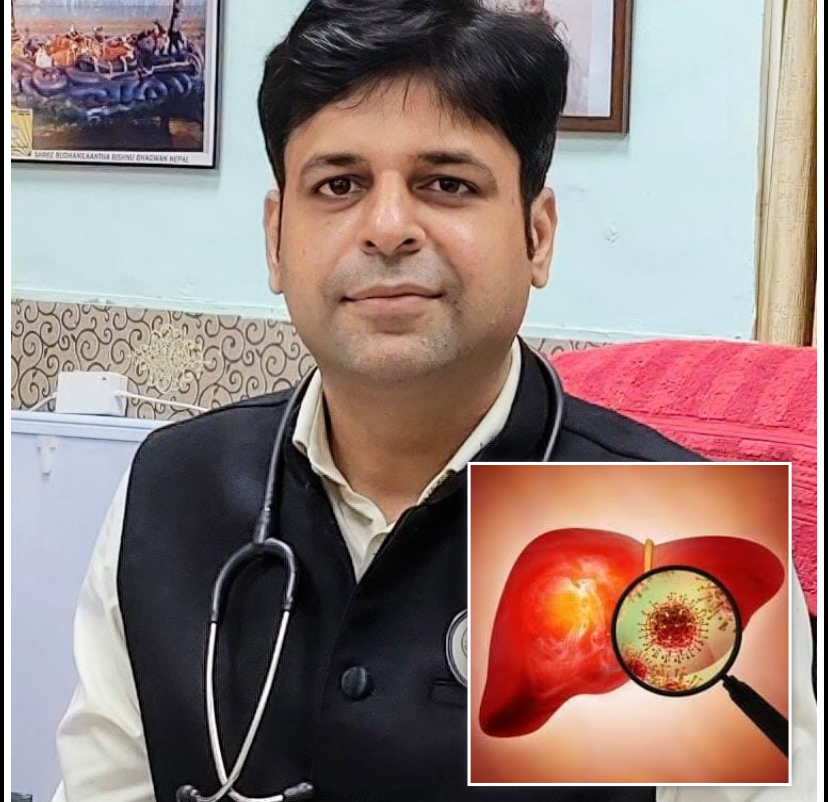Hepatitis is a deadly disease, if the liver is fit then health is hit: Dr. Aneja

Nation News. Chandigarh. Hepatitis can occur without any symptoms. But the good thing is that timely identification of symptoms and testing and prevention can help in avoiding it .Kurukshetra University Kurukshetra Community Center SMO Dr. Aneja told that World Hepatitis Day is celebrated every year on 28th July. The purpose of this day is to give information to people about the disease called hepatitis. There are five types of diseases, Hepatitis A, B, C, D and E, which are contagious. On this special day, people are told how they can avoid this disease. Hepatitis disease silently affects millions of people. According to the WHO report, 1 out of every 30 people in the world has hepatitis. If this disease is tested on time, it can be cured completely. But the problem is that this disease keeps growing silently without giving any symptoms.
The main symptoms of hepatitis are as follows:
Decreased appetite or no appetite at all,
Yellowing of the eyes and skin,
dark yellow color of urine,
constant fatigue and headaches,
abdominal pain, cramps, or feeling like vomiting,
Swelling in the body or legs,
sudden loss of weight,
Paleness or signs of tiredness under the eyes.
Dr Aneja explained that globally, the primary focus is on eliminating hepatitis B, C and D infections. Unlike acute viral hepatitis, these three infections cause chronic hepatitis that lasts for many years and results in more than 1 million deaths per year from liver cirrhosis and cancer. These three chronic hepatitis infections are responsible for more than 95% of hepatitis deaths worldwide. Although we have guidance and tools to diagnose, treat and prevent chronic viral hepatitis, these services are often out of reach for communities, and sometimes not available at all. On World Hepatitis Day 2025, the World Health Organization has highlighted the need to take necessary steps to increase diagnosis, prevention and treatment of liver disease, to achieve the hepatitis elimination target by 2030.
The World Health Organization has set a goal of eliminating hepatitis by 2030. To achieve this, the WHO urges countries to achieve specific targets.
Reduces new infections of hepatitis B and C by 90%.
65% reduction in hepatitis-related deaths from cirrhosis and cancer. At least 90% of people infected with hepatitis viruses (B and C) get diagnosed.
At least 80% of eligible individuals receive appropriate care.
Provide access to chronic hepatitis B treatment to all pregnant women and vaccination at birth for their infants to prevent hepatitis B virus (HBV) infection.
This year, 2025, the theme of World Hepatitis Day is “Hepatitis: Let’s break it”. The theme highlights the urgent need to overcome systemic, social and financial barriers, such as stigma and misinformation that hinder the worldwide effort to combat liver cancer and hepatitis. It is recommended that hepatitis services, including vaccination, testing and treatment, be simplified, scaled up and integrated into national health systems to eliminate hepatitis as a public health threat by 2030.
